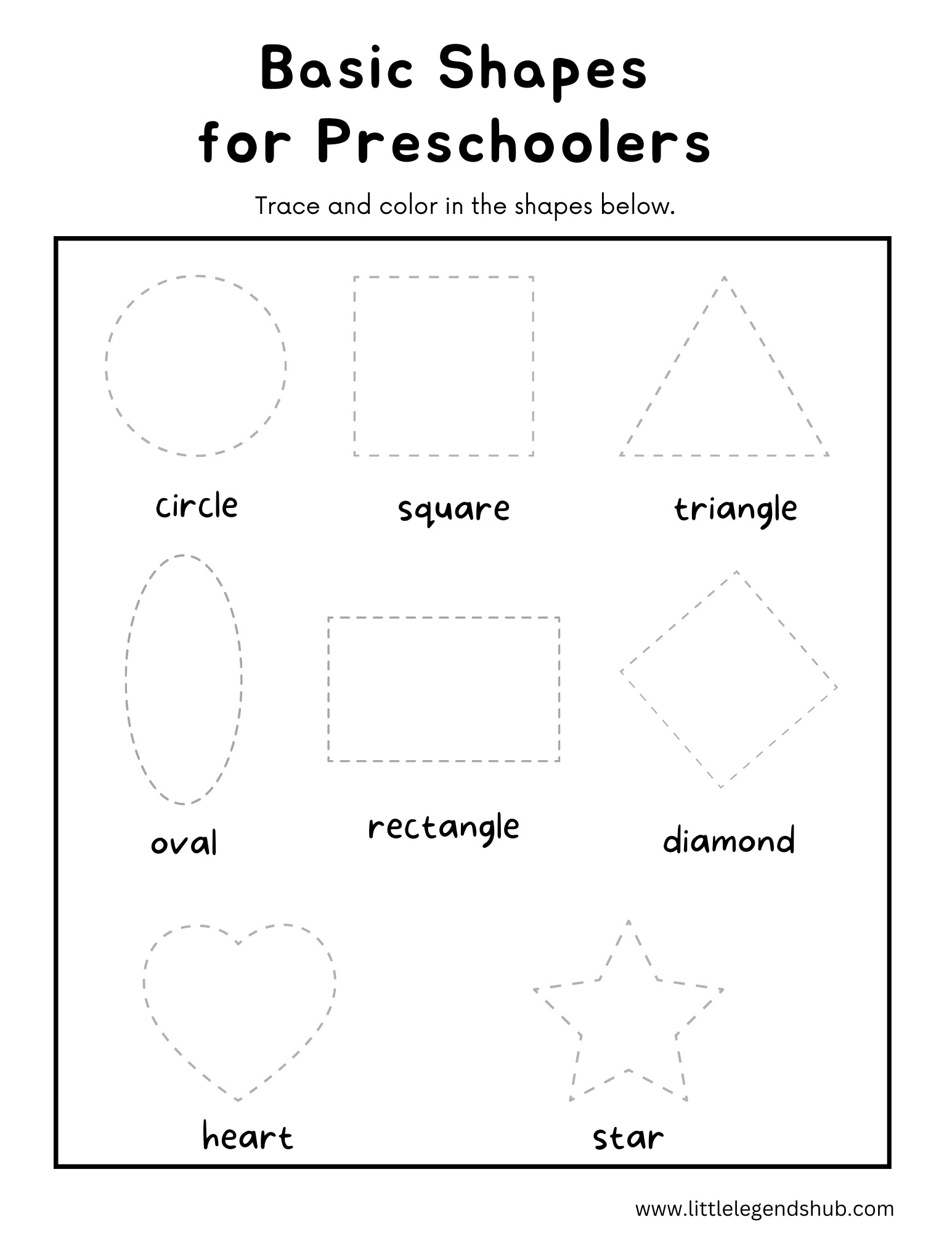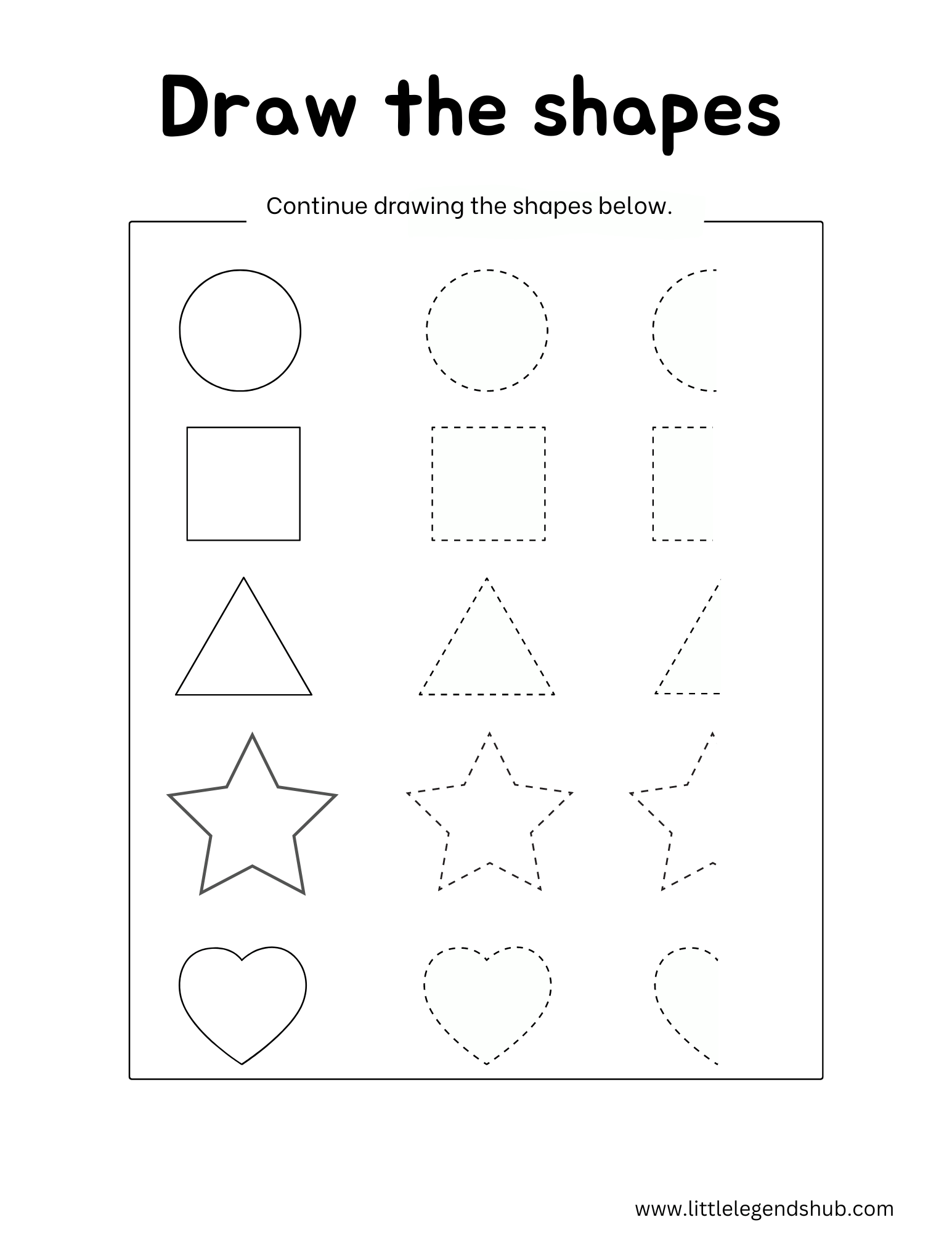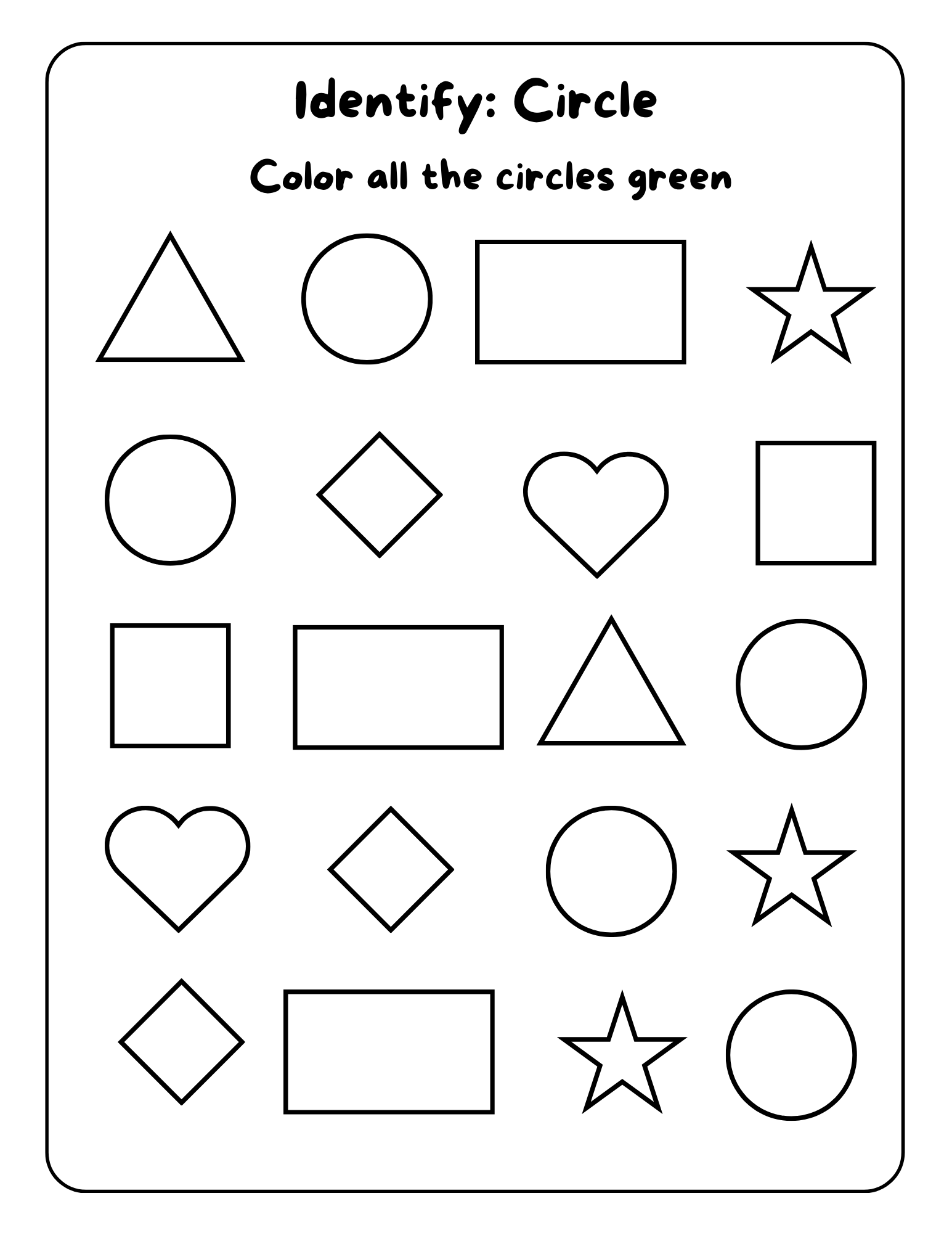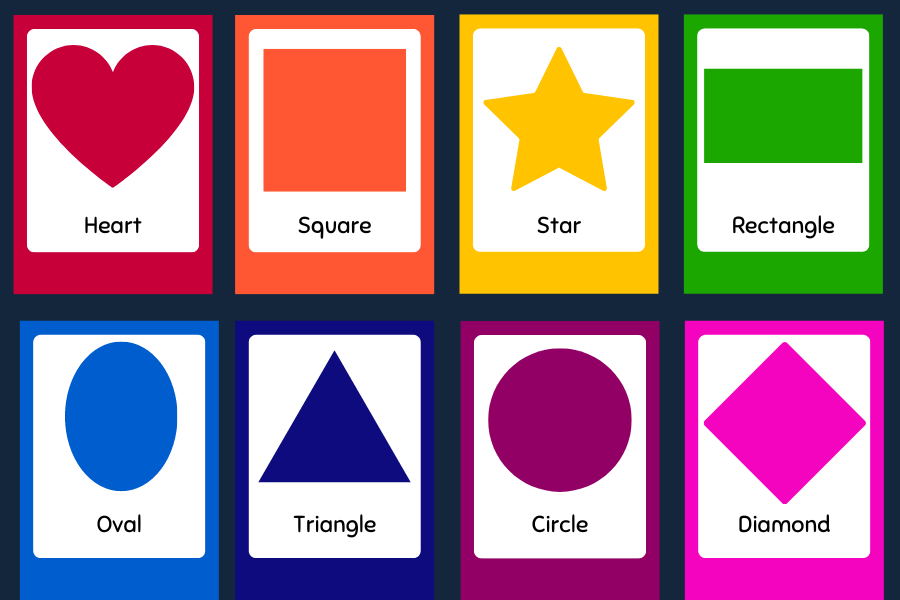Learning Shapes for Preschoolers is like starting a fun adventure, bringing joy to parents and educators as they watch the little ones begin their journey of discovery.
One fundamental aspect of early education is introducing basic shapes to toddlers. In this blog post, we’ll delve into the essentials of teaching shapes to young minds and explore the benefits it brings.
Basic Shapes for Kids: What Are the 8 Basic Shapes?
Before diving into teaching shapes, let’s identify the building blocks. The four basic shapes for kids are circle, square, triangle, and rectangle.Preschoolers typically learn about eight basic shapes, which form the foundation for understanding more complex geometric concepts.
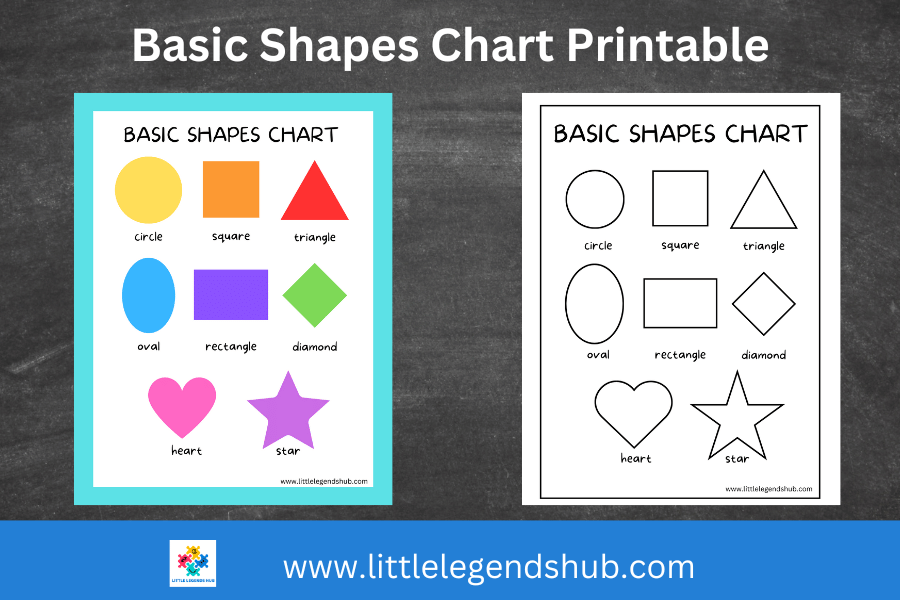
Here are the eight basic shapes for kids:
- Circle: A round shape with no corners or edges. Think of objects like a ball or a clock face.
- Square: A shape with four equal sides and four right angles. Picture a window or a piece of paper.
- Triangle: A three-sided shape with three angles. Examples include a slice of pizza or a road sign.
- Rectangle: Similar to a square but with two pairs of unequal sides. Think of a door or a book.
- Oval: A stretched-out, rounded shape. An egg or a rugby ball is a good example of an oval.
- Diamond (Rhombus): A four-sided shape with equal sides but unequal angles. Imagine a kite or a playing card.
- Heart: A symbol of love, often seen in cards or drawings. It has two rounded sections at the top and a point at the bottom.
- Star: A shape with multiple points, typically five or more. Children often associate stars with the night sky.
Teaching these basic shapes provides a solid foundation for preschoolers to explore more complex geometric patterns and figures as they progress in their learning journey.
To help children learn basic shapes, we have prepared a basic shapes chart for kids in two versions ( color and black &white). You can easily download the chart below.
What Basic Shapes Should Toddlers Know?
Toddlers grasp concepts at varying paces, but introducing them to circles, squares, triangles, and rectangles is a great starting point. These shapes form the basis for more intricate forms, fostering a smooth transition to advanced learning.
Starting with simple shapes makes the learning process smoother. Circles and squares are often considered the easiest shapes for preschoolers to grasp. Their uncomplicated nature allows for quick recognition and understanding.
How to Introduce Shapes to Preschoolers
Begin by incorporating shapes into everyday activities. Point out shapes in the environment, use everyday objects to illustrate shapes, and employ interactive games to make learning memorable.
Understanding shapes involves recognizing them in various contexts. Teach preschoolers that shapes are not only in pictures but also in the world around them. Connect shapes to real-life objects to solidify their understanding.
Benefits of Learning Shapes for Preschoolers
Why invest time in teaching shapes to kids? The benefits are numerous.
Shapes are the building blocks of more advanced concepts. Teaching shapes lays a sturdy foundation for mathematical and spatial skills, setting the stage for future academic success.
Let’s keep it simple and explore why it’s so good for them:
Recognizing Things
Knowing shapes helps preschoolers recognize and name things around them, like a round ball, a square book, or a triangular slice of pizza.
Understanding Patterns
Shapes help kids understand patterns. Patterns are like cool designs that repeat, and recognizing shapes is the first step to spotting them.
Sorting Stuff
Shapes make sorting things fun. It’s like putting all the circles in one group and all the squares in another. Sorting is like playing a game with toys!
Drawing and Art
When preschoolers learn shapes, they can use them to draw all sorts of cool pictures. It’s like having a magical toolbox to create anything they imagine.
Getting Ready for Numbers
Learning shapes is like a warm-up for numbers. Shapes have sides and corners, just like numbers. So, it’s like a fun way to get ready for math!
Everyday Things Make Sense
Shapes are everywhere! When preschoolers know shapes, the world around them starts making more sense. They can see shapes in toys, in the house, and even in the yummy snacks they eat.
Helps in Problem-Solving
Shapes are like puzzle pieces. Learning them helps preschoolers become super good at solving little problems. It’s like having a superpower for figuring things out!
Building Confidence
Knowing shapes makes preschoolers feel proud. It’s like having a secret code to understand the world, and that makes them more confident and excited to learn.
Playing Fun Games
Shapes make games super fun. Ever played “I Spy” or “Find the Shape”? It’s like a treasure hunt, but instead of gold, you find awesome shapes hiding around.
Building Really Cool Stuff
Did you know that lots of things around us are made from shapes? Buildings have squares and rectangles, and even a pizza is a yummy circle! Kids learn that shapes help build all the amazing stuff in the world.
Beyond geometric forms, children learn about spatial relationships, symmetry, and patterns. These concepts are crucial for developing a solid mathematical foundation.
So, learning shapes is not just about circles and squares. It’s like giving preschoolers special tools to explore, create, and understand the amazing world they live in!
Shaping Young Minds for a Bright Future
Teaching shapes to preschoolers is not just about geometry; it’s about nurturing cognitive skills and fostering a love for learning. Utilize the suggested methods, make it enjoyable, and watch as your preschooler embarks on a journey of discovery through the captivating world of shapes.
Looking for another fun, easy and free basic shapes printables for kids?
Free Basic Shapes Printables for Preschoolers
